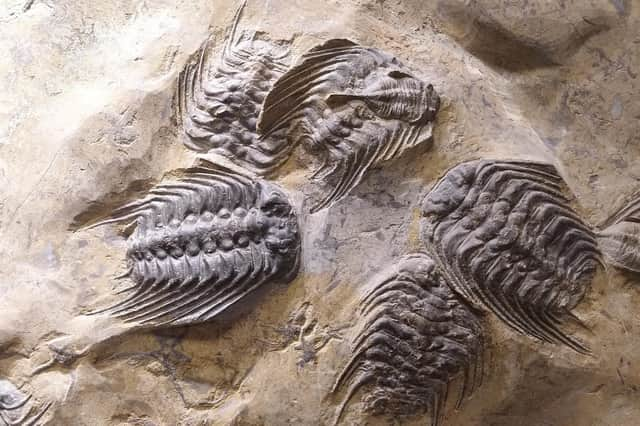University of Leeds researchers find supervolcanoes 'caused first major mass extinction 450 million years ago'


Massive eruptions released nutrients into the ocean - reducing carbon dioxide and triggering an Ice Age.
Around 85 per cent of all marine-based species were wiped out. At the time the continents formed a single land mass, Pangaea.


Advertisement
Hide AdAdvertisement
Hide AdThe 'Late Ordovician' event reshaped the course of life on Earth, say scientists.
It coincided with two exceptionally large pulses of volcanic activity in present-day North America and South China.
Blankets of ash and lava laid down on the seafloor fertilised the oceans - driving a chain of events.
It included climatic cooling, glaciation, widespread reduction in ocean oxygen levels - and mass extinction.
Advertisement
Hide AdAdvertisement
Hide AdLead author Dr Jack Longman, of the University of Oldenburg, Germany, said: "It has been suggested global cooling was driven by an increase in phosphorus input to the oceans.
"Phosphorus is one of the key elements of life, determining the pace at which tiny aquatic organisms like algae can use photosynthesis to convert carbon dioxide into organic matter."
They eventually settled on the seabed and were buried - ultimately reducing levels of CO2 which then sparked cooling.
The extinction had previously been blamed on the end of an ice age increasing sea levels and reducing oxygen in the oceans.
Advertisement
Hide AdAdvertisement
Hide AdCo author Professor Tom Gernon, of the University of Southampton, said: "The unresolved puzzle is why glaciation and extinction occurred in two distinct phases at this time, separated by about 10 million years.
"That requires some mechanism to pulse the supply of phosphorus, which is hard to explain."
Both series of eruptions on opposite sides the globe coincided very closely with the peaks in glaciation and extinction.
Explained Dr Gernon: "But intense bursts of volcanism are more typically linked to massive CO2 release, which should drive global warming, so another process must be responsible for sudden cooling events."
Advertisement
Hide AdAdvertisement
Hide AdThe study in Nature Geoscience found 'weathering' of the volcanic material provided a surge in phosphorus.
Co author Prof Martin Palmer, also from Southampton, said: "When volcanic material is deposited in the oceans it undergoes rapid and profound chemical alteration, including release of phosphorus, effectively fertilising the oceans.
“So, it seemed viable hypothesis and certainly one worth testing."
The team looked at volcanic ash layers in much younger marine sediments to compare their phosphorus contents before and after they were modified by interactions with seawater.
Advertisement
Hide AdAdvertisement
Hide AdThe analysis shed light on the potential geochemical impact of extensive volcanic layers from enormous eruptions during the Ordovician.
Co-author Prof Benjamin Mills, of the University of Leeds, said: "This prompted us to develop a global biogeochemical model to understand the knock-on effects on the carbon cycle of rapidly adding a surge of phosphorus leached from volcanic deposits into the ocean."
But seeding the oceans with phosphorus to solve the current climate crisis may do more harm than good.
Dr Mills said: "Excess nutrient runoff from sources like agricultural fertilisers is a major cause of marine eutrophication - where algae grow rapidly and then decay, consuming oxygen and causing substantial damage to ecosystems at the present day."
Advertisement
Hide AdAdvertisement
Hide AdOn short timescales massive volcanic eruptions can warm the climate via CO2 emissions - and drive global cooling over millions of years.
There have since been four other mass extinctions - including the asteroid strike that killed off the dinosaurs 66 million years ago.
Scientists say a sixth is now underway as plants and animals disappear owing to human activity.
Added Dr Longman: "Our study may prompt reinvestigations of other mass extinctions during Earth's history."
Advertisement
Hide AdAdvertisement
Hide AdThe US has four supervolcanoes. Europe has one located beneath Naples - which would destroy the continent if it blew.
Recent research suggests eruptions could happen as frequently as once every 5,200 years.
Support the YEP and become a subscriber today. Enjoy unlimited access to local news, the latest on Leeds United and interactive puzzles. With a digital subscription, you see fewer ads, enjoy faster load times, and get access to exclusive newsletters and content. Click here to subscribe.
